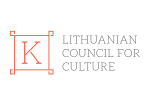Walls That Remember in Seirijai
 Lina Šlipavičiūtė’s urban art project Walls That Remember, launched back in 2019, restores the memory of the Jewish people to the streets of Lithuanian cities and towns. The murals originate from authentic photographs and feature on the walls of Vilnius, Merkinė, Salantai, Utena, Švėkšna and Molėtai. Seirijai is the latest urban site of the project, starting in summer 2023.
Lina Šlipavičiūtė’s urban art project Walls That Remember, launched back in 2019, restores the memory of the Jewish people to the streets of Lithuanian cities and towns. The murals originate from authentic photographs and feature on the walls of Vilnius, Merkinė, Salantai, Utena, Švėkšna and Molėtai. Seirijai is the latest urban site of the project, starting in summer 2023.
More information about Walls That Remember is available >>here<<.
 Seirijai before World War II
Seirijai before World War II
The walls of Seirijai commemorate a culturally diverse, complex and dynamic life. From the beginning of the 18th century, in addition to the Lithuanian, Polish and German people, the town also had a Jewish community. Before World War II, the town’s Jewish population stood at around 1000 people. The Jewish community grew to include a synagogue, kloyz, school, library, bank, courthouse, and dozens of shops. The town also boasted a number of craftsmen, light industry workshops, and a vibrant social life. Every day, Seirijai brought together people who differed in lifestyle and religious beliefs, yet were connected by strong economic ties, working relationships, cultural life and social activities.

Seirijai historical photographs
 War
War
All this was irreparably destroyed in a matter of months in 1941. On 22 June, German bombs and fires wiped out the buildings in the heart of the town. The schulhof (a synagogal courtyard) was razed to the ground. Today, all that remains of its former grounds are the foundations of the synagogue, the community bath built in 1930, and the ritual stone and well that stood in the centre of the courtyard.
The people were left homeless and stayed with friends and relatives, many of them in the Garbarskas Manor. When the Germans occupied the town, all Jewish residents were ordered to wear Stars of David sewn on their clothes and were subject to forced labour. Mass and individual killings began immediately, and on 11 September, the entire Jewish population of the town was killed in the Barauciškė Forest. For three days before the shooting, people were imprisoned in the former Seirijai Trade School. The community of the Žmuidzinavičius Gymnasium in Seirijai holds an annual memorial service at the site. A memorial stone marks the location of the mass grave in the Barauciškė Forest.
 Surviving buildings
Surviving buildings
What do the current walls of Seirijai remember? There are surviving buildings that served as homes and workplaces for Jewish families. The town also maintains a large Jewish cemetery, with the oldest gravestone dating back to 1789. In 2018-2019, the Maceva organisation organised the documentation of the Jewish cemetery in Seirijai, and the transcribed epitaphs with their English translation are now available for viewing.
 Seirijai doctors
Seirijai doctors
When elderly Lithuanians describe the history of the shtetls, their recollections generally revolve around merchants, and very often around Jewish physicians. Seirijai is no exception – doctors Herschel Garbarskis, Leiba Finkelis and his dentist wife Menucha Finkelienė are always remembered with appreciation and reverence. They not only treated the townspeople, but also the inhabitants of the surrounding area, and were renowned for their kind hearts.
To learn more about the Finkel family, listen to the interview with Frida Ruderman (née Finkelytė) here >> Oral history interview with Frida Ruderman (United States Holocaust Memorial Museum, Oral history Collection).
.
 Liubelski family
Liubelski family
The descendants of the Jewish emigrants from Seirijai with an interest in their roots offer an insight into the town’s Jewish past. The family history of Rivka Lubelski, the woman commemorated in the mural, is only known to us through the efforts of her great-granddaughter Idit Levavi Gabbai. She was kind to share photographs of her great-grandparents and relatives who lived in Seirijai before the war. One of Rivka Lubelsky’s sons, Meir Levavi, emigrated to Israel in the interwar period and after a while, in 1932, he persuaded his youngest sister, Masha Lubelsky, to join him. Their emigration has led to the continuing history of the family, but the rest of their relatives in Seirijai devastatingly became victims of the genocide.
You can listen to more detailed Liubelski and Levavi families history, presented Shirley Levavi and Idit Levavi Gabbai >>here<<, or you can read it >>here<<.

The project is funded by
The project was realised by
Partners
Lithuanian Council for Culture
Lazdijai Culture Center
Jewish (Litvak) Community of Lithuania
Seirijai A. Žmuidzinavičius' gimnasium
Lazdijai Tourism Informtion Center





The project is funded by
Lithuanian Council for Culture

The project was realised by
Lazdijai Culture Center

Partners
Jewish (Litvak) Community of Lithuania

Seirijai A. Žmuidzinavičius' gimnasium

Lazdijai Tourism Informtion Center




















